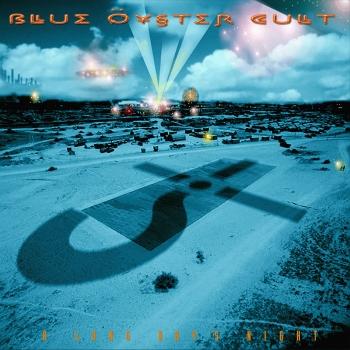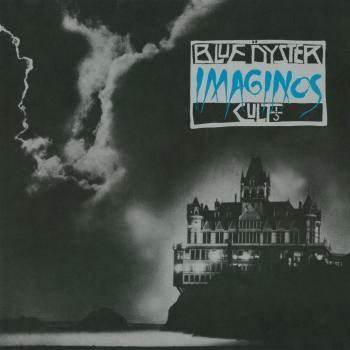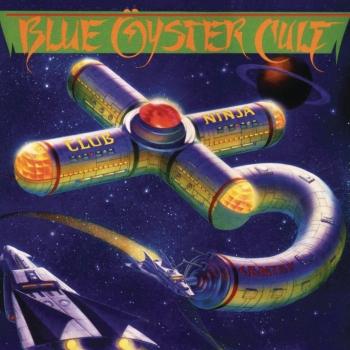
Agents Of Fortune (Remaster) Blue Oyster Cult
Album info
Album-Release:
1976
HRA-Release:
13.07.2016
Label: Sony / Columbia / Legacy
Genre: Rock
Subgenre: Hard Rock
Artist: Blue Oyster Cult
Composer: Albert Bouchard, Murray Krugman, Donald Waller, A. Lanier, Donald Roeser, S. Pearlman, P. Smith, H. Robbins
Album including Album cover
I`m sorry!
Dear HIGHRESAUDIO Visitor,
due to territorial constraints and also different releases dates in each country you currently can`t purchase this album. We are updating our release dates twice a week. So, please feel free to check from time-to-time, if the album is available for your country.
We suggest, that you bookmark the album and use our Short List function.
Thank you for your understanding and patience.
Yours sincerely, HIGHRESAUDIO
- 1 This Ain't the Summer of Love 02:20
- 2 True Confessions 02:57
- 3 (Don't Fear) The Reaper 05:08
- 4 E.T.I. (Extra Terrestrial Intelligence) 03:43
- 5 The Revenge of Vera Gemini 03:53
- 6 Sinful Love 03:29
- 7 Tattoo Vampire 02:41
- 8 Morning Final 04:30
- 9 Tenderloin 03:40
- 10 Debbie Denise 04:12
Info for Agents Of Fortune (Remaster)
Feted by heavy metal fans, this was a much broader album that put them in touch with AOR radio, and consequently took them out of their heavy rock ghetto. The ace in their tarot pack was the entrancing and enchanting 'Don't Fear The Reaper' - the greatest song that the original Byrds never wrote. Flowing and chiming it put the band in the pop charts with a song of rare quality and consequently pushed this album's sales. The other tracks struggle to compete with the Reaper, but there are moments, especially with 'The Revenge Of Vera Gemini,' on which Patti Smith narrates.
„If ever there were a manifesto for 1970s rock, one that prefigured both the decadence of the decade's burgeoning heavy metal and prog rock excesses and the rage of punk rock, 'This Ain't the Summer of Love,' the opening track from Agents of Fortune, Blue Öyster Cult's fourth album, was it. The irony was that while the cut itself came down firmly on the hard rock side of the fence, most of the rest of the album didn't. Agents of Fortune was co-produced by longtime Cult record boss Sandy Pearlman, Murray Krugman, and newcomer David Lucas, and in addition, the band's lyric writing was being done internally with help from poet-cum-rocker Patti Smith (who also sings on 'The Revenge of Vera Gemini'). Pearlman, a major contributor to the band's songwriting output, received a solitary credit while critic Richard Meltzer, whose words were prevalent on the Cult's previous outings, was absent. The album yielded the band's biggest single with '(Don't Fear) The Reaper,' a multi-textured, deeply melodic soft rock song with psychedelic overtones, written by guitarist Donald 'Buck Dharma' Roeser. The rest of the album is ambitious in that it all but tosses aside the Cult's proto-metal stance and instead recontextualizes their entire stance. It's still dark, mysterious, and creepy, and perhaps even more so, it's still rooted in rock posturing and excess, but gone is the nihilistic biker boogie in favor of a more tempered -- indeed, nearly pop arena rock -- sound that gave Allen Lanier's keyboards parity with Dharma's guitar roar, as evidenced by 'E.T.I.,' 'Debbie Denise,' and 'True Confessions.' This is not to say that the Cult abandoned their adrenaline rock sound entirely. Cuts like 'Tattoo Vampire' and 'Sinful Love' have plenty of feral wail in them. Ultimately, Agents of Fortune is a solid record, albeit a startling one for fans of the band's earlier sound. It also sounds like one of restless inspiration, which is, in fact, what it turned out to be given the recordings that came after. It turned out to be the Cult's last consistent effort until they released Fire of Unknown Origin in 1981.“ (Thom Jurek, AMG)
'Agents of Fortune is a startlingly excellent album--startling because one does not expect Blue Öyster Cult to sound like this; loud but calm, manic, but confident, melodic but rocking.' (Ken Tucker, Rolling Stone)
'I still consider Agents of Fortune to be perhaps the greatest Heavy Metal album of all time, mainly for its intelligence.' (Xavier Russell, Kerrang)
Eric Bloom, stun guitar, percussion, vocals
Donald 'Buck Dharma' Roeser, guitar, synthesizer, percussion, vocals
Allen Lanier, keyboards, guitar, bass, vocals
Joe Bouchard, bass, piano, vocals
Albert Bouchard, drums, acoustic guitar, percussion, harmonica, vocals
Additional musicians:
Patti Smith, vocals (on track 5)
Randy Brecker, horns
Michael Brecker, horns
David Lucas, vocals, keyboards, percussion
Recorded 1975–1976 at The Record Plant, New York City
Engineered by Andy Abrams, Shelly Yakus
Produced by Murray Krugman, Sandy Pearlman, David Lucas
Digitally remastered
Blue Öyster Cult
Spanning three decades, Blue Öyster Cult has a long and storied history. The band got its start in the late ’60s on Long Island, New York, as the Soft White Underbelly, but each member had been involved in bands previously in high school and college, before ending up in the “right place at the right time” to create the beginnings of Blue Öyster Cult.
The threads that eventually wove together to create Blue Öyster Cult got their start in upstate New York.
Long Island native Donald Roeser and Albert Bouchard (of Watertown, New York) met at Clarkson College, in Potsdam, NY. The two were introduced by a mutual friend, Bruce Abbott (who later co-authored “Golden Age of Leather” with Donald). With Abbott and two other friends, they formed “The Disciples” and played college parties and local beer halls. The next year, the band reformed and played the same circuits as “Travesty” (named after the Blues Project album). Through all this, their studies fell by the wayside, and both Albert and Donald decided to quit college to concentrate on playing music full-time.
Eventually “Travesty” broke up, Donald and Albert took seperate paths for a while. Donald went back to Long Island, and Albert took a musical opportunity in Chicago. After moving there, though, the band fizzled, and Albert returned to NY and joined Donald. In the meantime, Donald had been jamming with local musicians, and had met a person that would become very influential in their future: Sandy Pearlman.
Sandy Pearlman became interested in rock music around the time of the British Invasion, and was a pioneering voice of rock criticism, opening a new field for creative writers like Lester Bangs. Both Pearlman and his friend Richard Meltzer were contributors for seminal magazine “Crawdaddy!,” the first magazine that dedicated itself to analysis of rock music and its culture.
Allen Lanier came into the fold by way of guitarist John Wiesenthal. Allen had accepted employment at a film company at which Wiesenthal was also an employee. After becoming acquainted, Wiesenthal invited Allen out to Long Island to meet and jam with the loose group of musicians he played with, and Allen began to regularly jam with them.
An old house near Stony Brook College became ground zero for the formative band, and casual jams with whomever happened to be hanging around began to turn into rehearsals with a core band, which included Wiesenthal, Donald, Albert, Allen and Andrew Winters, a school friend of Donald. It was 1967.
Pearlman (along with Meltzer and Wiesenthal) had been a student at Stony Brook, and was becoming increasingly involved in the music scene. When he heard the formative combo, he instantly recognized the talent at work. He had an idea for a band, and thought that this group of musicians had the chops to put that idea into play. The musicians saw that Pearlman’s contacts and stature in the local (and increasingly national) scene could help them spawn a career as well, and an alliance was formed.
This album contains no booklet.






















